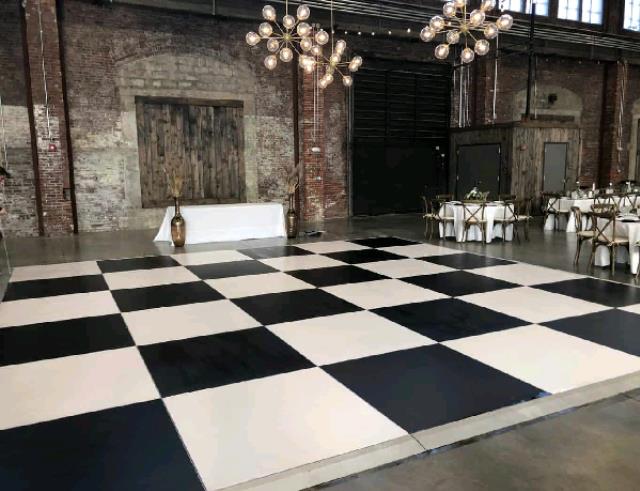Selecting the right materials for building a durable and safe external performance surface is essential for guaranteeing an enjoyable session. Exterior dance floors must endure various weather elements while offering a firm foundation for performers and attendees. Thus, it is important to evaluate factors such as material resilience, safety attributes, and maintenance requirements when making choices. This guide will examine several appropriate options and their benefits in creating an open-air dance floor.
One common option for exterior dance floors is wood. Wood provides a classic and warm aesthetic that many find appealing. Solid woods like beech or ash are particularly preferred due to their durability and ability to cushion impact, which can protect dancers’ joints. Additionally, timber has inherent slip-resistant qualities when finished correctly, minimizing the chance of injuries. However, preserving a wooden dance floor requires regular sealing and refinishing to shield it from moisture and UV damage, making it essential to consider the environment in which the floor will be placed.

Another practical alternative is composite materials, which combine natural fibers with plastic. These composites are engineered to be impervious to humidity, mildew, and fading from sunlight. Composite dance floors offer longevity similar to conventional wood without the intensive maintenance. They are less susceptible to warping and cracking than wooden floors when subjected to extreme outdoor conditions. Furthermore, composite surfaces often have built-in Read Full Report anti-slip properties, making them a more secure selection for open-air occasions.
For those seeking a more modern solution, interlocking tiles made of PVC or elastomer bamboo dance floor rentals are excellent options. These tiles are designed for easy installation and can be rearranged or replaced as needed. The versatility of using interlocking tiles permits quick setup and breakdown, making them ideal for temporary dance events or festivals. Additionally, these materials provide cushioning that enhances comfort while dancing and minimizes the risk of accidents resulting from falls. The sealed structure of PVC and rubber also inhibits water penetration, additionally extending the lifespan of the dance surface.
Ultimately, it is vital to evaluate the site and intended use of the outdoor dance floor when selecting materials. For instance, if the dance floor will be situated in a high-traffic area or exposed to inclement weather frequently, choosing durable surfaces that require low upkeep will be important. On the other hand, for lighter use or in more protected areas, less heavy options may be adequate. In any case, emphasizing safety aspects such as grip and shock absorption should remain at the center of design.
To summarize, building a durable and safe outdoor dance floor involves careful consideration of diverse materials suited for different environments and purposes. Wood offers timeless beauty but requires consistent care; engineered composites balance appearance with resilience; interlocking tiles provide versatility and ease of use. Ultimately, identifying the unique requirements of the dance floor's intended use will guide decision-making toward selecting the most appropriate material for an satisfying and secure dancing experience in outdoor spaces.